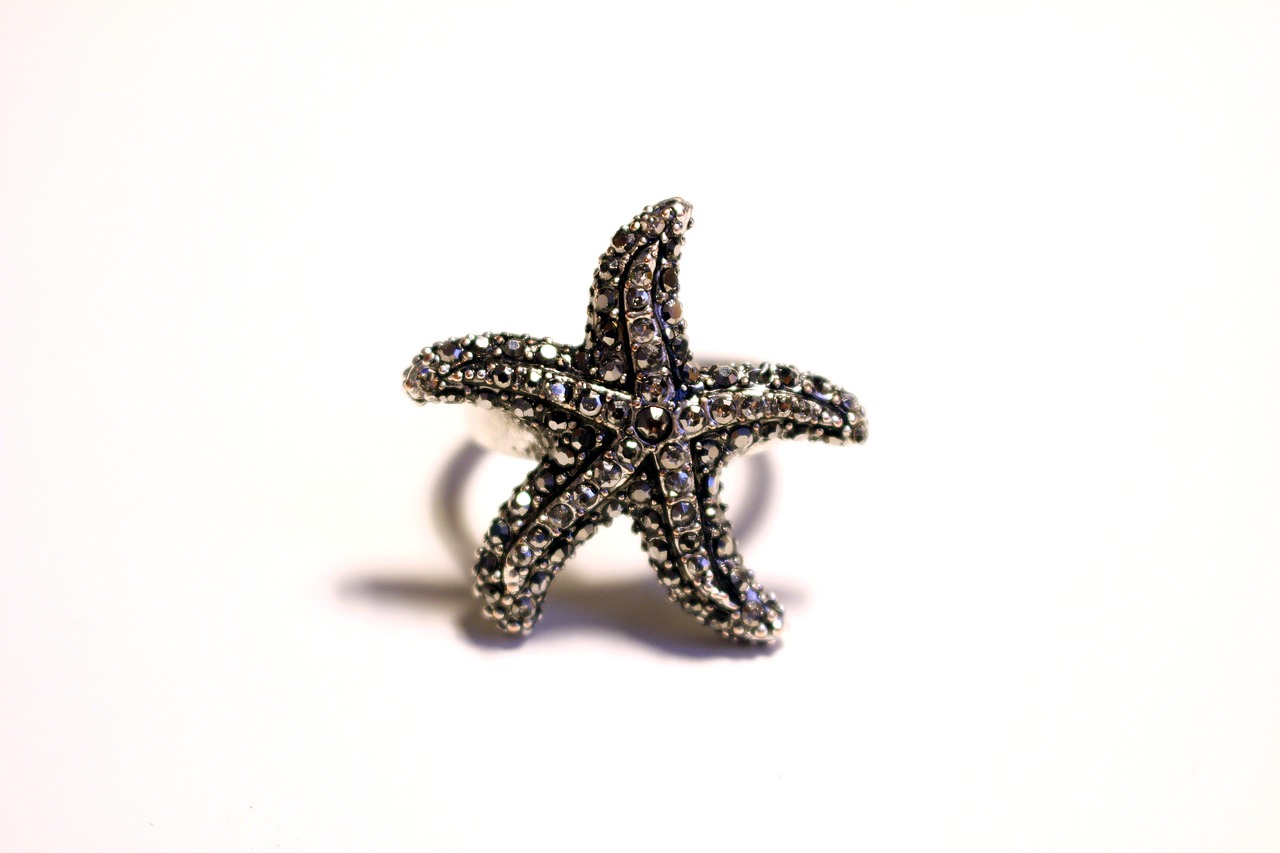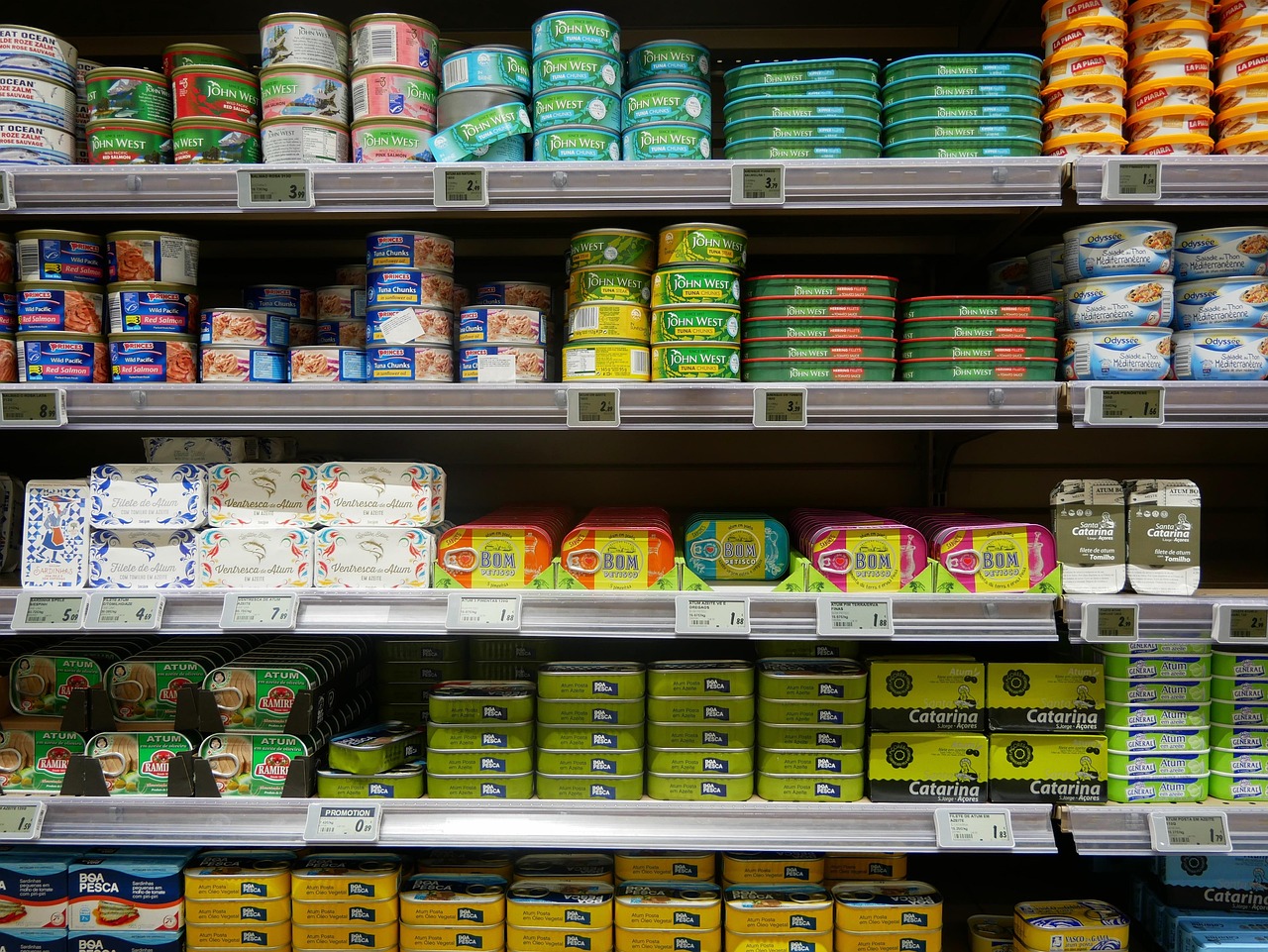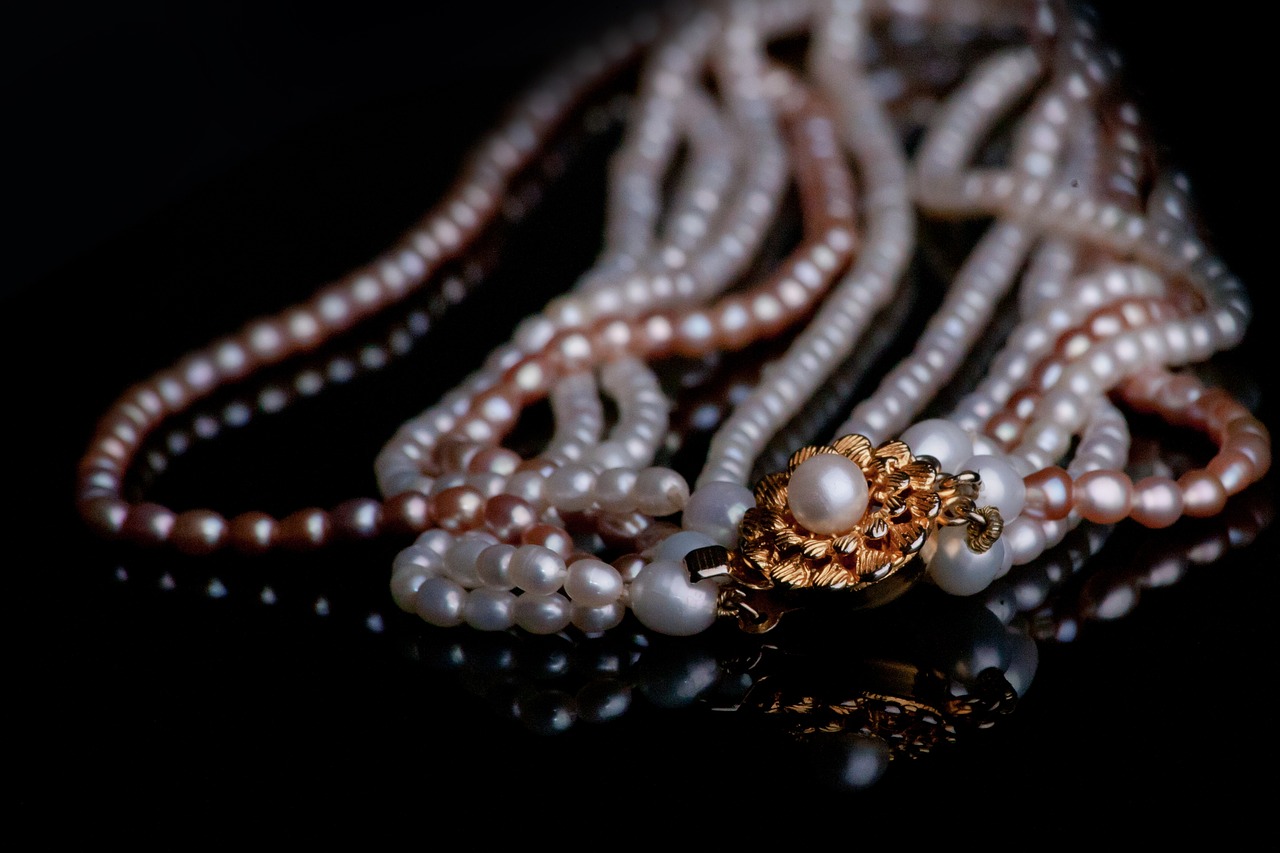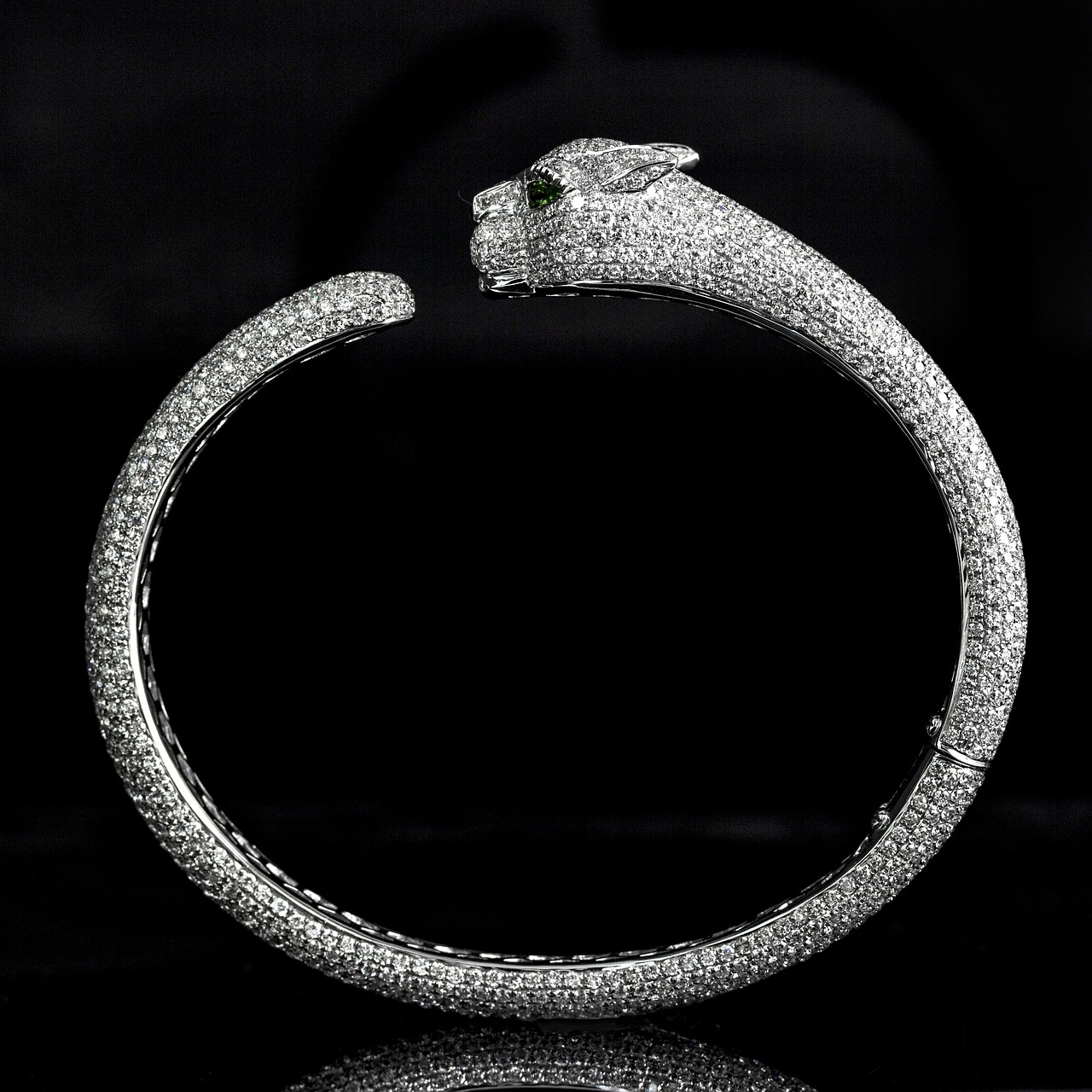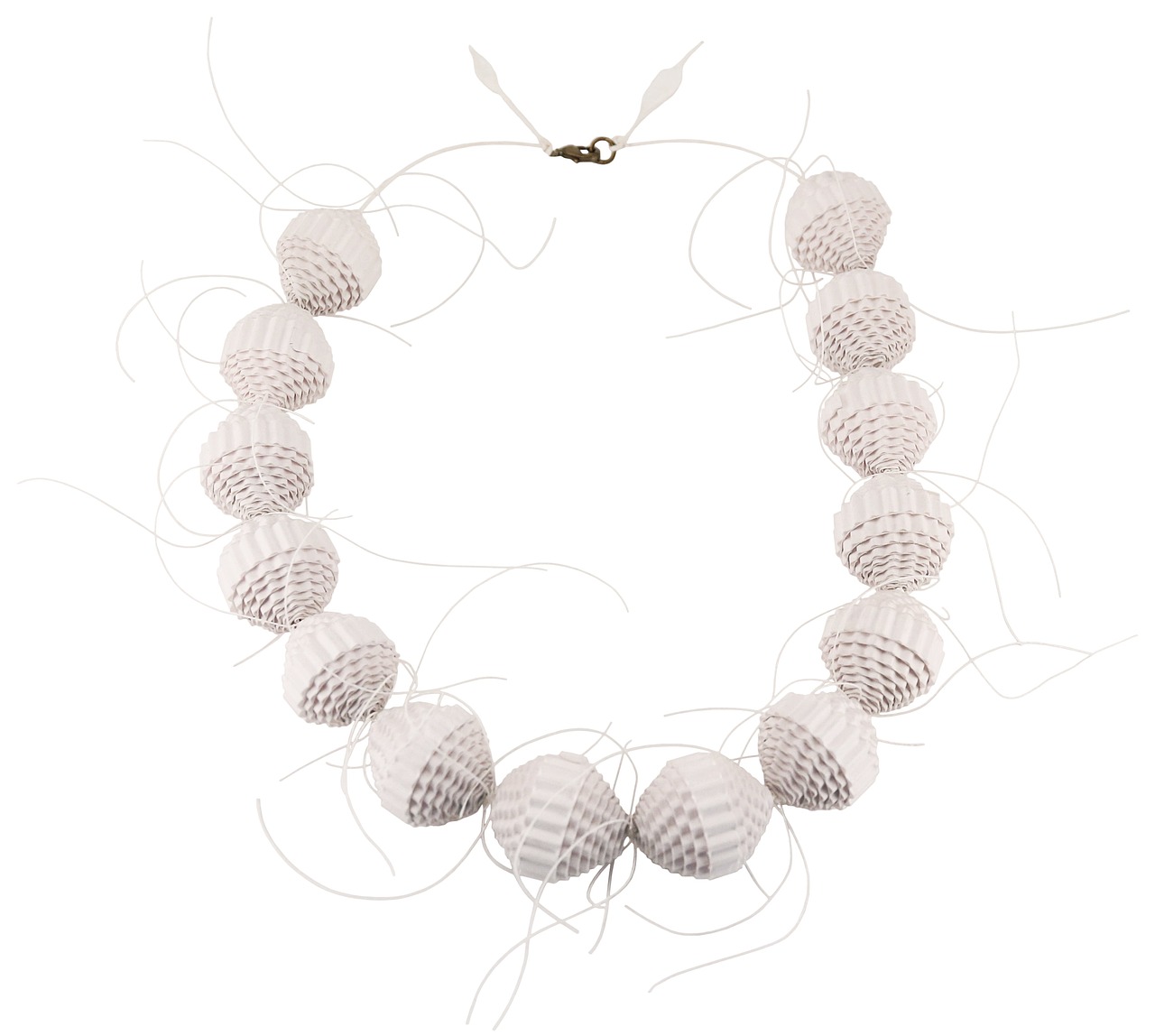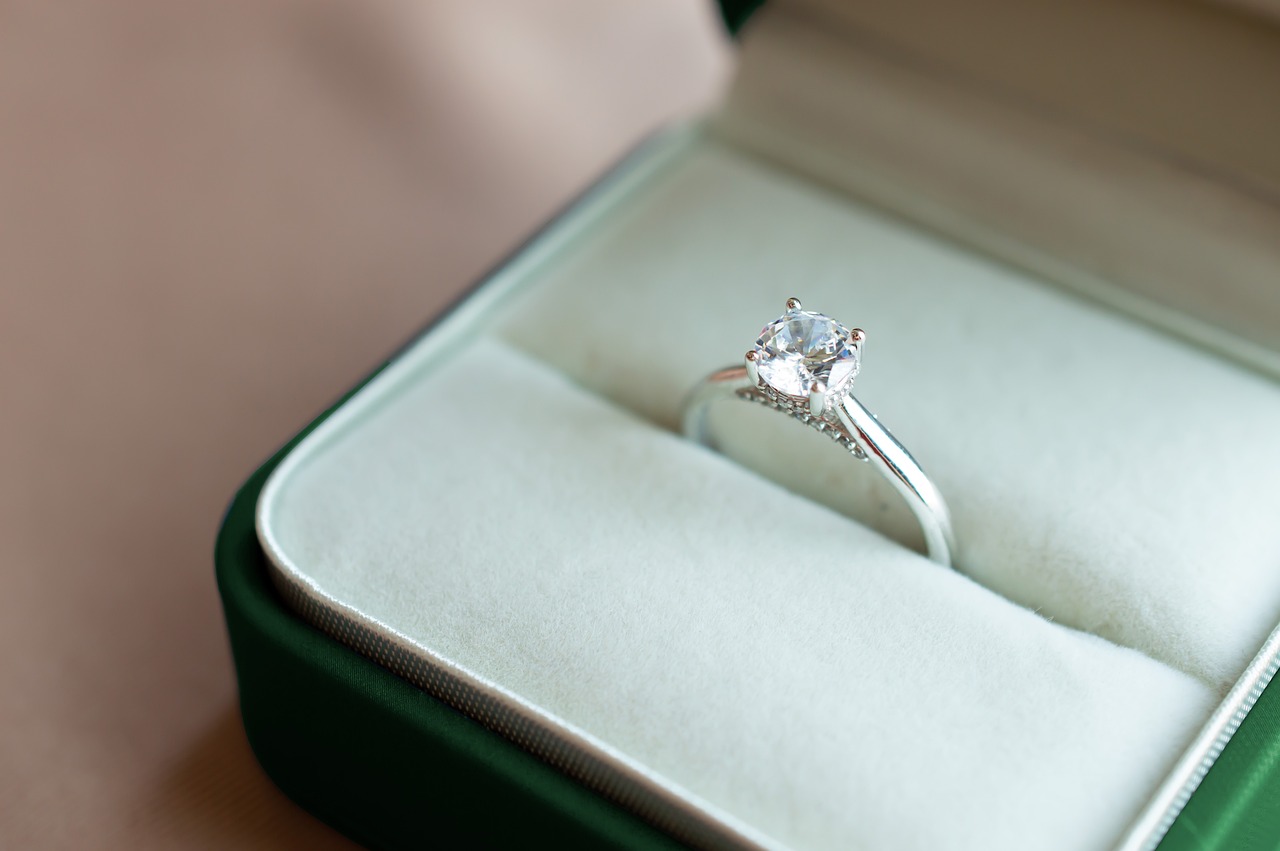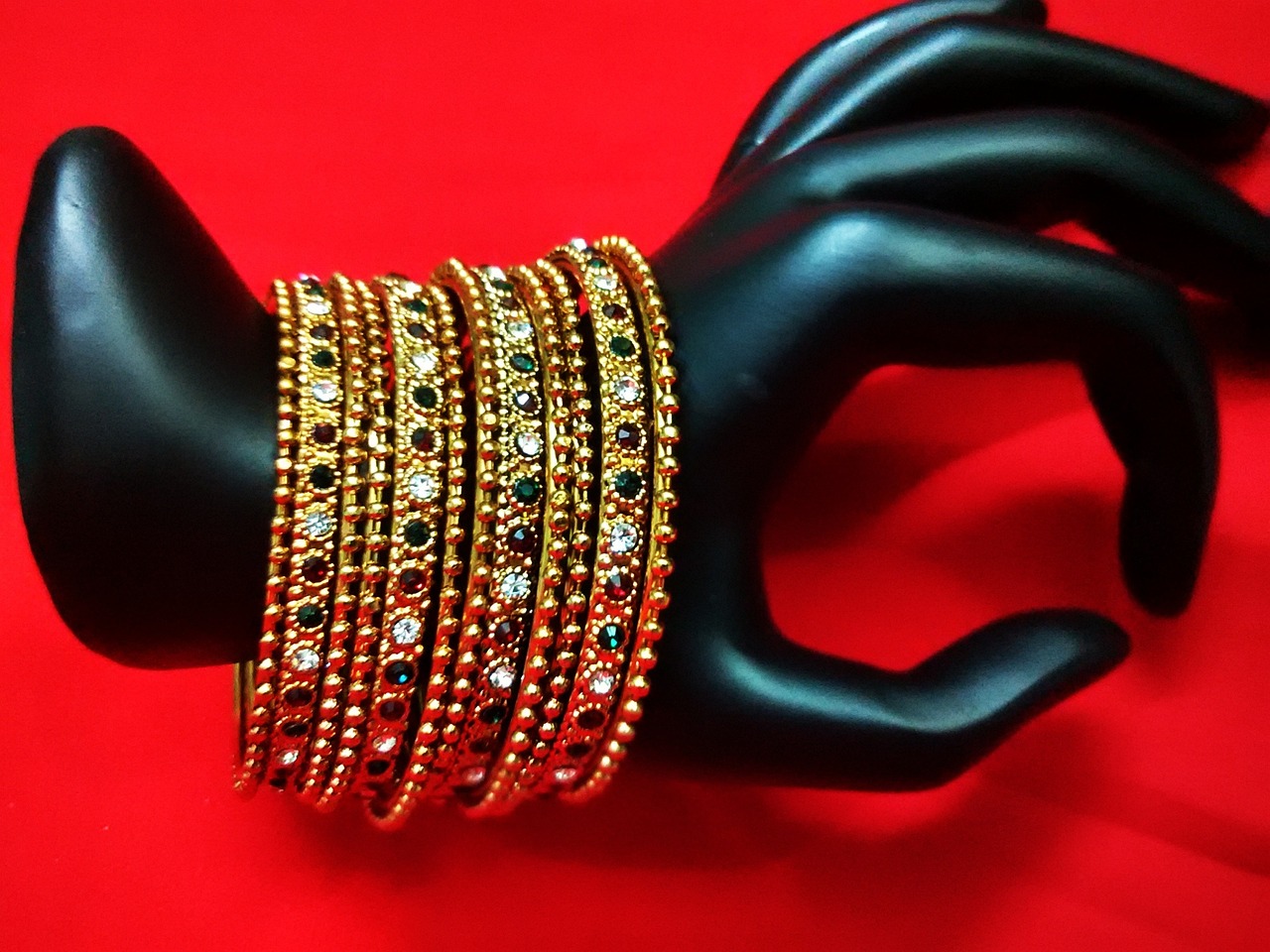Discover the symbolism, history, and modern significance of pearl earrings. This article delves into their cultural importance, styles, and how they can enhance personal expression through fashion.
What Do Pearl Earrings Symbolize?
Pearl earrings carry rich symbolism, often representing purity, wisdom, and emotional balance. Their unique origins from the ocean contribute to their mystique and allure in various cultures. In many traditions, pearls are seen as a connection to the divine, embodying the beauty that arises from adversity.
How Are Pearls Formed?
Understanding the formation of pearls adds depth to their value. Pearls are created through a natural process involving oysters and irritants, revealing the beauty of nature’s artistry in jewelry. The biological process of pearl formation begins when an irritant, such as a grain of sand, enters an oyster. The oyster then secretes layers of nacre, a substance that coats the irritant and ultimately forms the pearl.
Types of Pearls and Their Characteristics
- Akoya Pearls: Renowned for their classic white color and high luster.
- Tahitian Pearls: Known for their dark hues and unique overtones.
- Freshwater Pearls: Available in various shapes and colors, offering versatility.
What Styles of Pearl Earrings Are Popular Today?
From classic studs to modern drop earrings, various styles of pearl earrings cater to different tastes. Each style can enhance outfits for both casual and formal settings.
Classic Pearl Studs: Timeless Elegance
Classic pearl studs are a staple in many jewelry collections, offering versatility and sophistication. Their simplicity makes them suitable for any occasion, from everyday wear to special events.
Statement Pearl Earrings: Bold and Beautiful
For those looking to make a statement, oversized or uniquely designed pearl earrings can add flair to any outfit. These pieces often feature intricate designs that draw attention and admiration.
How to Care for Pearl Earrings?
Proper care is essential to maintain the beauty of pearl earrings. Their delicate nature requires specific cleaning and storage practices to ensure longevity and luster.
Cleaning Your Pearl Earrings Safely
To clean pearl earrings, use a soft cloth and mild soap. Avoid harsh chemicals, as they can damage the nacre and diminish the pearls’ natural shine.
Storing Pearls to Prevent Damage
Store pearl earrings in a soft pouch or lined jewelry box to prevent scratching. Keeping them away from other jewelry helps maintain their pristine condition and prevents wear.
What Are the Cultural Significances of Pearl Earrings?
Pearl earrings hold various cultural meanings worldwide, often symbolizing love, protection, and even wealth. Their significance can vary greatly depending on regional customs and traditions.
Pearls in Bridal Traditions
In many cultures, pearls are associated with weddings and are often worn by brides as a symbol of purity and new beginnings, enhancing their beauty on their special day.
Historical Context of Pearls in Fashion
Historically, pearls have adorned royalty and the elite, reflecting status and wealth. Their use in fashion has evolved, but they remain a symbol of elegance and sophistication.
Are Pearl Earrings a Good Investment?
Investing in pearl earrings can be wise, especially if you choose high-quality pieces. Understanding the market and trends can help you make informed decisions for your jewelry collection.
Factors Affecting the Value of Pearls
The value of pearls is influenced by factors such as size, shape, color, and luster. Knowledge of these elements can help you identify valuable pieces when purchasing.
Market Trends in Pearl Jewelry
Staying informed about market trends can assist in making investment decisions. Trends in pearl jewelry often reflect broader fashion movements, impacting their desirability and value.
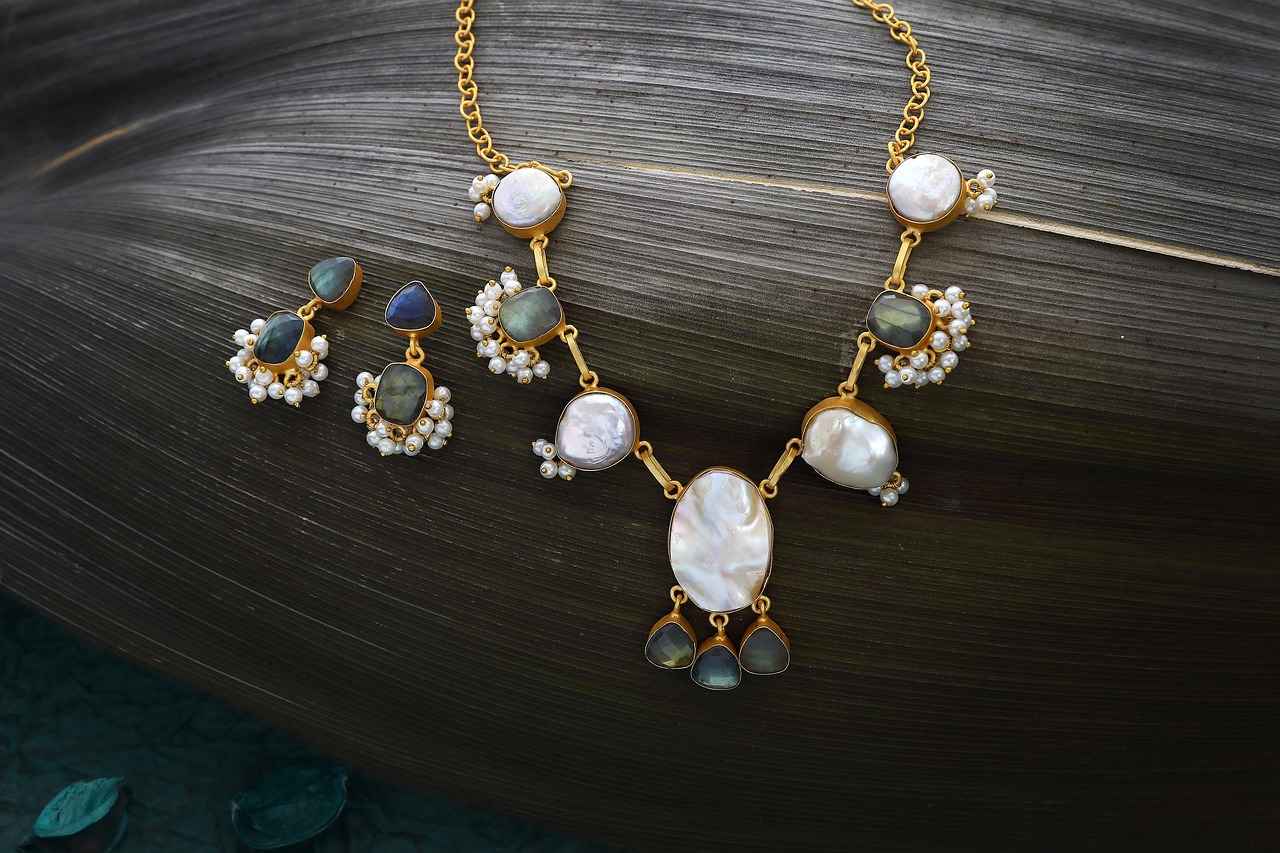
What Do Pearl Earrings Symbolize?
Pearl earrings are not just a beautiful accessory; they carry a profound symbolism that resonates across different cultures and eras. Often associated with purity, wisdom, and emotional balance, these exquisite gems encapsulate a unique narrative that enhances their allure. Their formation in the depths of the ocean adds to their mystique, making them a popular choice in various cultural contexts.
The symbolism of pearl earrings transcends mere aesthetics. Historically, pearls have been linked to feminine virtues. In many cultures, they are considered a symbol of purity and innocence, often worn by brides on their wedding day to signify new beginnings and the promise of love. This association stems from the way pearls are formed; they are created through a process of irritation and healing within an oyster, representing the journey from discomfort to beauty.
In addition to purity, pearls are also seen as symbols of wisdom. Ancient civilizations believed that pearls held the secrets of the ocean, and wearing them could impart knowledge and insight. This belief persists in modern times, where pearls are often gifted as tokens of guidance and understanding.
Furthermore, pearl earrings are thought to promote emotional balance. Their calming presence is believed to help wearers navigate their feelings and foster inner peace. This quality makes them a popular choice for those seeking harmony in their lives, whether in personal relationships or professional endeavors.
The cultural significance of pearl earrings varies widely. In Asian cultures, pearls are often associated with wealth and prosperity. They are frequently included in traditional attire during significant celebrations, such as weddings and festivals. In some Native American cultures, pearls are seen as offerings to the spirits, symbolizing a deep connection to nature and the ocean.
In contrast, European traditions often emphasize the association of pearls with royalty and status. Historical figures, such as Queen Elizabeth I, famously adorned herself with pearls, further solidifying their reputation as a symbol of elegance and sophistication. This historical context has shaped modern perceptions of pearl earrings, making them a staple in high-fashion jewelry collections.
Today, pearl earrings come in various styles, each reflecting their rich symbolism. Classic pearl studs embody timeless elegance, making them a versatile choice for any occasion. Their simplicity allows the inherent beauty of the pearl to shine, reinforcing the ideas of purity and sophistication.
On the other hand, statement pearl earrings, which feature bold designs or oversized pearls, cater to those who wish to express their individuality. These pieces often combine pearls with other materials, creating a fusion that reflects modernity while still honoring traditional symbolism.
When selecting pearl earrings, consider what they symbolize for you personally. Whether you are drawn to their associations with purity, wisdom, or emotional balance, choosing a pair that resonates with your values can enhance your connection to them. Pay attention to factors such as size, shape, and color, as these elements can significantly impact your overall experience with the earrings.
In conclusion, pearl earrings are more than just a fashion statement; they are imbued with deep meanings that reflect cultural significance and personal expression. Their rich symbolism of purity, wisdom, and emotional balance continues to captivate wearers around the world, making them a cherished addition to any jewelry collection.

How Are Pearls Formed?
Understanding the formation of pearls adds depth to their value. Pearls are created through a natural process involving oysters and irritants, revealing the beauty of nature’s artistry in jewelry. This fascinating process not only highlights the intricate relationship between marine life and natural phenomena but also underscores the unique qualities that make pearls so desirable. Let’s explore how these exquisite gems are formed, their biological processes, and the types of pearls that result from this captivating journey.
Pearls begin their journey when an irritant, such as a grain of sand or a parasite, enters the shell of an oyster. This unexpected guest disrupts the oyster’s tranquility, prompting it to react. To protect itself, the oyster secretes layers of nacre, a smooth substance that coats the irritant. Over time, these layers accumulate, resulting in the formation of a pearl.
The biological process of pearl formation can take several years, depending on the species of oyster and environmental conditions. The oyster continuously secretes nacre, which is composed of aragonite and conchiolin, the same materials that make up its shell. As these layers build up, the pearl grows in size and develops its unique characteristics.
Nacre plays a crucial role in the beauty and value of pearls. The quality and thickness of the nacre determine the pearl’s luster, which is a key factor in its overall appeal. High-quality pearls have a thick layer of nacre, resulting in a deep, iridescent shine that captivates the eye. In contrast, pearls with thin nacre may appear dull and lack the desired luster.
- Akoya Pearls: Known for their classic round shape and high luster, Akoya pearls are typically white or cream-colored and are primarily cultivated in Japan.
- Tahitian Pearls: These pearls are famous for their dark colors, ranging from black to green and blue. They are produced by the black-lipped oyster found in French Polynesia.
- Freshwater Pearls: Grown in freshwater lakes and rivers, these pearls come in various shapes and colors, making them versatile and popular among jewelry makers.
The environment in which oysters live significantly impacts the quality and characteristics of the pearls they produce. Factors such as water temperature, salinity, and the presence of pollutants can influence the growth rate of pearls and the thickness of nacre. Healthy, clean waters tend to produce pearls of superior quality, while stressed environments may lead to irregular shapes and lower luster.
Yes, pearls can be cultivated through a process known as pearl farming. This involves human intervention, where a technician carefully implants an irritant into the oyster to initiate pearl formation. This method allows for greater control over the quality and characteristics of the pearls produced, making it possible to harvest them in a sustainable manner.
In conclusion, the formation of pearls is a remarkable natural process that showcases the intricate beauty of marine life. From the initial irritant to the final lustrous gem, each pearl tells a story of resilience and artistry. Understanding this process not only enhances our appreciation for these gems but also highlights the importance of preserving the delicate ecosystems that produce them.
The Biological Process of Pearl Formation
Pearls are among nature’s most exquisite creations, formed through a fascinating biological process that showcases the intricate relationship between oysters and their environment. The journey of a pearl begins when an irritant, such as a grain of sand or a tiny parasite, enters the shell of an oyster. This seemingly unwelcome guest prompts the oyster to take action, leading to the remarkable formation of a pearl.
When an irritant is introduced, the oyster’s natural defense mechanism kicks in. The oyster begins to secrete a substance called nacre, which is also known as mother-of-pearl. Nacre is a combination of aragonite (a form of calcium carbonate) and conchiolin (an organic protein). The oyster layers this nacre around the irritant, gradually building up layers over time. This process can take anywhere from several months to a few years, depending on various factors such as the species of the oyster and environmental conditions.
The layers of nacre are what give pearls their unique luster and iridescence. As the oyster continues to secrete nacre, the pearl grows in size and develops its characteristic shine. The thickness and quality of the nacre significantly influence the pearl’s overall beauty and value. Pearls formed in this natural manner are often referred to as natural pearls, and they are highly sought after in the jewelry market.
Interestingly, not all oysters produce pearls. The ability to create pearls is primarily found in certain species, such as the Pinctada margaritifera (black-lipped oyster) and the Pinctada fucata (Akoya oyster). These oysters thrive in specific environments, and their ability to produce pearls is influenced by factors such as water temperature, salinity, and the presence of irritants.
In addition to natural pearls, the pearl industry also produces cultured pearls. Cultured pearls are created through human intervention, where a technician deliberately introduces an irritant into the oyster to stimulate nacre production. This process allows for more consistent quality and availability of pearls in the market.
The journey of a pearl from an irritant to a beautiful gem is a testament to nature’s artistry. Each pearl tells a story of resilience and transformation, making them not only stunning pieces of jewelry but also symbols of endurance and beauty. Understanding the biological process behind pearl formation not only enhances our appreciation for these gems but also highlights the delicate balance of nature that allows such wonders to exist.
As we explore the world of pearls, it is essential to recognize the importance of sustainable practices in pearl farming. Overharvesting and environmental changes can threaten oyster populations, impacting the delicate ecosystems they inhabit. Supporting ethical pearl production ensures that these beautiful gems can continue to be cherished for generations to come.
The Role of Nacre in Pearls
Nacre, often referred to as mother-of-pearl, plays a critical role in the formation and beauty of pearls. This iridescent substance is not only responsible for the stunning luster of pearls but also serves as a protective layer for the mollusk that produces them. Understanding the significance of nacre can deepen your appreciation for these exquisite gems.
Nacre is a composite material produced by certain mollusks, including oysters and abalones. It is formed when an irritant, such as a grain of sand, enters the shell. In response, the mollusk secretes layers of nacre around the irritant, creating a pearl over time. This natural process can take several years, depending on the type of mollusk and environmental conditions.
The quality and thickness of nacre directly influence a pearl’s overall beauty and value. A pearl with thicker nacre typically exhibits a deeper luster and a more vibrant color. Conversely, pearls with thin nacre may appear dull and less desirable. This makes nacre a crucial factor in determining the quality of pearls in the jewelry market.
The luster of a pearl is one of its most captivating attributes. Nacre reflects light in a way that creates a shimmering effect, enhancing the pearl’s beauty. The more layers of nacre a pearl has, the more complex and rich its luster becomes. This phenomenon is often described as a glow that emanates from within the pearl, making it appear almost alive.
- White Nacre: Commonly found in Akoya pearls, known for their classic look and high luster.
- Colored Nacre: Seen in Tahitian pearls, which can range from deep black to vibrant hues, adding uniqueness.
- Irregular Nacre: Found in baroque pearls, these have distinctive shapes and can be quite striking.
When shopping for pearls, it’s essential to assess the quality of nacre. Here are some tips:
- Examine the luster: Look for a deep, reflective shine.
- Check for surface quality: Higher quality nacre will have fewer blemishes and imperfections.
- Consider the thickness: Gently rub the pearl against your teeth; a smooth feel indicates thicker nacre.
Nacre holds cultural significance across various societies. In many cultures, it symbolizes protection and purity. The ancient Chinese believed that pearls and nacre had healing properties, while in the West, they are often associated with elegance and sophistication.
In summary, nacre is the heart of every pearl, influencing its beauty, value, and cultural significance. Understanding the role of nacre not only enhances your knowledge of pearls but also enriches your appreciation for these timeless treasures. Whether you are considering a purchase or simply admiring their beauty, recognizing the importance of nacre will deepen your connection to these exquisite gems.
Types of Pearls and Their Characteristics
Pearls are among the most cherished gems in the world of jewelry, celebrated not only for their beauty but also for their unique origins and stories. Various types of pearls, including Akoya, Tahitian, and Freshwater, each exhibit distinct colors, shapes, and cultural significance.
Akoya pearls are renowned for their classic beauty and luster. Cultivated primarily in Japan, these pearls are typically round and have a smooth surface, making them a popular choice for traditional pearl jewelry. Their sizes range from 2mm to 10mm, and they often feature a white or cream color with subtle pink or silver overtones.
- Color: White to cream with pink or silver tones.
- Size: Generally between 2mm and 10mm.
- Shape: Predominantly round, with some baroque variations.
Tahitian pearls, often referred to as “black pearls,” are cultivated in the lagoons of French Polynesia. These pearls are celebrated for their exotic colors, which can range from deep black to shades of green, blue, and even purple. Their unique hues make them a favorite for bold statement pieces in jewelry.
- Color: Black with overtones of green, blue, or purple.
- Size: Typically larger, ranging from 8mm to 18mm.
- Shape: Available in round, oval, and baroque shapes.
Freshwater pearls are primarily produced in freshwater mussels, mainly in China. They are known for their affordability and variety, coming in a wide range of colors, shapes, and sizes. Unlike saltwater pearls, freshwater pearls can be found in both round and irregular shapes, making them a versatile choice for jewelry designers.
- Color: White, pink, lavender, and even peach.
- Size: Usually between 3mm and 12mm.
- Shape: Round, oval, and baroque.
Each type of pearl carries its own story and significance in the world of jewelry. For instance, Akoya pearls symbolize elegance and tradition, making them a popular choice for bridal jewelry. Tahitian pearls, with their bold colors, represent adventure and individuality, appealing to those who wish to make a statement. Freshwater pearls, on the other hand, embody versatility and affordability, catering to a broader audience.
When selecting pearl earrings, consider your personal style and the occasion. Akoya pearls are ideal for classic and formal events, while Tahitian pearls can elevate a casual outfit with their striking colors. Freshwater pearls offer flexibility, suitable for everyday wear or special occasions alike.
In summary, understanding the different types of pearls and their characteristics not only enhances your jewelry collection but also allows you to appreciate the rich history and craftsmanship behind each piece. Whether you are drawn to the classic beauty of Akoya, the boldness of Tahitian, or the versatility of Freshwater, pearls offer something unique for every jewelry lover.
How to Choose the Right Pearl Earrings
Choosing the perfect pair of pearl earrings can be both an exciting and daunting task. With a myriad of options available, it’s essential to consider several key factors to ensure you select a pair that complements your personal style and fits the occasion. This guide will help you navigate through the important aspects of pearl earrings selection.
When it comes to size, it’s crucial to consider your face shape and personal style. Smaller pearls, typically around 6-8mm, are perfect for a subtle, elegant look, making them ideal for daily wear or professional settings. On the other hand, larger pearls, ranging from 9-12mm or more, can serve as statement pieces, adding flair to evening attire or special occasions.
Pearls come in a variety of colors, each carrying its own significance and aesthetic appeal. White pearls are classic and versatile, while pink pearls offer a romantic touch. Black pearls, often associated with sophistication, can add a unique twist to your jewelry collection. Consider your skin tone; warm tones often complement golden or peach pearls, whereas cool tones may shine with silver or blue pearls.
Pearls are not just round; they come in various shapes, including baroque, drop, and button. Round pearls are the most traditional and sought after, while baroque pearls offer a more artistic and unique appearance. Consider the shape that resonates with your personal style and the message you want to convey through your jewelry.
The quality of pearls can significantly impact their appearance and value. Look for the luster, which is the shine of the pearl’s surface. Higher-quality pearls exhibit a deep, reflective luster. Additionally, examine the surface quality; fewer blemishes indicate a more valuable pearl. The nacre thickness is also important; thicker nacre generally means a more durable and beautiful pearl.
Pearl earrings come in various styles to suit different occasions. Stud earrings are timeless and perfect for everyday wear, while drop earrings can add elegance to formal outfits. For a bold statement, consider chandelier earrings adorned with pearls, which can elevate any evening look. Think about where you will wear your earrings and choose a style that reflects the occasion.
Comfort is key when selecting earrings. Ensure that the ear posts are made of hypoallergenic materials, especially if you have sensitive skin. Additionally, consider the weight of the earrings; heavier pieces might not be suitable for long wear. Always try on the earrings to assess their comfort and fit before making a purchase.
In conclusion, selecting the right pearl earrings involves careful consideration of size, color, shape, quality, style, and comfort. By understanding these factors, you can find the perfect pair that not only enhances your outfit but also reflects your unique personality.

What Styles of Pearl Earrings Are Popular Today?
When it comes to pearl earrings, the variety available today is truly remarkable. From classic designs to contemporary styles, there is a pair of pearl earrings to suit every individual’s taste and preference. This article explores the most popular styles of pearl earrings, highlighting their unique characteristics and the occasions for which they are best suited.
- Classic Pearl Studs: These timeless pieces are often the first choice for many jewelry lovers. Their simplicity and elegance make them suitable for both casual and formal occasions. Classic pearl studs can effortlessly elevate a simple outfit, making them a must-have in any jewelry collection.
- Modern Drop Earrings: For those who prefer a more contemporary look, drop earrings featuring pearls can add a touch of sophistication. These earrings often incorporate unique designs, such as geometric shapes or mixed materials, allowing for personal expression while maintaining the classic beauty of pearls.
- Hoop Pearl Earrings: Combining the classic hoop style with the elegance of pearls, these earrings are perfect for fashion-forward individuals. They can be worn casually or dressed up for special occasions, making them a versatile addition to any wardrobe.
- Chandelier Pearl Earrings: If you’re looking to make a statement, chandelier earrings adorned with pearls are an excellent choice. Their intricate designs and cascading pearls can create a stunning focal point for any outfit, perfect for formal events or evenings out.
- Multi-Strand Pearl Earrings: These earrings feature multiple strands of pearls, creating a layered effect that adds depth and texture. They are perfect for those who want to showcase their bold style while still enjoying the elegance of pearls.
Each style of pearl earrings not only enhances the wearer’s outfit but also reflects their personal style and preferences. Whether you opt for the understated elegance of classic studs or the bold flair of chandelier earrings, pearl earrings can seamlessly transition from day to night.
When selecting the perfect pair of pearl earrings, consider the following factors:
- Occasion: Think about where you will wear the earrings. For everyday wear, classic studs or small drop earrings are ideal, while statement pieces like chandelier earrings are better suited for formal events.
- Personal Style: Choose a style that resonates with your personal aesthetic. If you prefer minimalist designs, classic studs or small hoops may be best. Conversely, if you enjoy bold fashion statements, opt for drop or chandelier earrings.
- Comfort: Ensure that the earrings are comfortable to wear, especially if you plan to have them on for extended periods. Lightweight designs are often more comfortable for all-day wear.
In conclusion, the world of pearl earrings is rich with diverse styles that cater to various tastes and occasions. By understanding the different types available and considering your personal style and the context in which you will wear them, you can find the perfect pair of pearl earrings that not only enhance your outfit but also reflect your unique identity.
Classic Pearl Studs: Timeless Elegance
Classic pearl studs are more than just a piece of jewelry; they are a timeless symbol of elegance that transcends generations. Their understated beauty makes them a versatile accessory that complements a variety of styles and occasions. Whether you are dressing up for a formal event or adding a touch of sophistication to your everyday attire, pearl studs are an essential addition to any jewelry collection.
One of the main reasons for the enduring popularity of classic pearl studs is their versatility. They can be worn with virtually any outfit, from casual jeans and a t-shirt to an elegant evening gown. This adaptability allows individuals to express their unique style without overwhelming their look.
Pearl studs are unique due to their natural origin. Unlike other gemstones that are mined, pearls are formed within oysters and are a product of nature’s artistry. Their organic formation gives each pearl a distinct character, making no two pairs exactly alike.
- Casual Outfits: Pair your pearl studs with a simple blouse and jeans for a chic, everyday look.
- Office Attire: Enhance your professional wardrobe by wearing pearl studs with tailored suits or dresses.
- Evening Wear: Elevate your evening gown or cocktail dress with a classic pair of pearl studs for a refined touch.
When selecting pearl studs, consider the size and color that best suits your personal style. While traditional white pearls are a classic choice, colored pearls such as pink, black, or gold can add a unique flair to your collection. Additionally, the size of the pearls can impact their overall look; smaller studs offer a subtle elegance, while larger pearls make a bolder statement.
To maintain the beauty of your classic pearl studs, proper care is essential. Here are some tips:
- Cleaning: Use a soft cloth to wipe your pearls after wearing them to remove any oils or dirt.
- Storage: Store them in a soft pouch or a separate compartment in your jewelry box to prevent scratches.
- Avoiding Chemicals: Keep your pearls away from harsh chemicals, including perfumes and cleaning products, as they can damage the nacre.
Pearl earrings, including classic studs, have rich cultural significance across various societies. They are often associated with purity and wisdom, making them a popular choice for brides on their wedding day. In many cultures, pearls symbolize protection and wealth, reflecting their historical association with royalty and the elite.
Investing in classic pearl studs can be a wise decision. High-quality pearls can retain their value over time and even appreciate, especially if they are well-cared for. When considering an investment, focus on factors such as luster, size, and shape to ensure you are purchasing a valuable piece.
In conclusion, classic pearl studs are a timeless accessory that offers both versatility and sophistication. Their unique charm and cultural significance make them a cherished addition to any jewelry collection. Whether for personal use or as a gift, pearl studs are sure to impress and delight.
Statement Pearl Earrings: Bold and Beautiful
When it comes to making a fashion statement, statement pearl earrings are a remarkable choice. These eye-catching accessories not only elevate your outfit but also showcase your unique sense of style. Often characterized by their oversized designs or intricate craftsmanship, these earrings are perfect for those who want to stand out in a crowd.
Statement pearl earrings serve as bold accessories that can transform even the simplest attire into a stunning ensemble. Here are some reasons why you should consider adding these pieces to your jewelry collection:
- Versatility: Statement earrings can be paired with a variety of outfits, from casual wear to formal gowns.
- Unique Designs: Many statement pearl earrings feature creative shapes, colors, and embellishments that reflect personal style.
- Attention-Grabbing: Their size and design make them the focal point of any outfit, drawing compliments and admiration.
Statement pearl earrings come in various styles, each offering something unique. Here are some popular options:
- Oversized Hoops: These earrings combine the classic hoop style with the elegance of pearls, creating a modern twist.
- Chandelier Earrings: Featuring cascading pearls, these earrings add a touch of glamour and sophistication.
- Geometric Designs: Uniquely shaped earrings can incorporate pearls in unexpected ways, making them a favorite among fashion-forward individuals.
Styling statement pearl earrings can be fun and creative. Here are a few tips to help you make the most of these striking accessories:
- Keep Other Accessories Minimal: With statement earrings, less is often more. Avoid overwhelming your look with too many accessories.
- Choose Complementary Colors: Select outfits in colors that enhance the pearls, allowing them to shine without clashing.
- Dress Up or Down: Statement earrings can elevate a casual outfit or complement a formal dress, making them incredibly versatile.
With the rise of online shopping, finding the perfect pair of statement pearl earrings has never been easier. Consider exploring:
- Jewelry Boutiques: Local boutiques often carry unique, handcrafted pieces that you won’t find elsewhere.
- Online Retailers: Websites like Etsy and specialized jewelry stores offer a wide range of designs and price points.
- Designer Collections: High-end brands frequently feature statement pearl earrings in their collections, ensuring quality and exclusivity.
To keep your statement pearl earrings looking their best, consider the following maintenance tips:
- Regular Cleaning: Use a soft cloth to gently wipe the pearls after wearing them to remove oils and dirt.
- Proper Storage: Store earrings in a soft pouch or a lined jewelry box to prevent scratches and tangling.
- Avoid Chemicals: Keep your earrings away from harsh chemicals and perfumes that can damage the pearls’ luster.
In conclusion, statement pearl earrings are not just accessories; they are expressions of individuality and style. Their unique designs and versatility make them a must-have for anyone looking to enhance their wardrobe. Embrace the boldness of these earrings and let them do the talking!

How to Care for Pearl Earrings?
Pearl earrings are not just beautiful accessories; they are treasures that require proper care to maintain their luster and elegance. Understanding how to care for these delicate gems is crucial for anyone wanting to preserve their beauty over time. This guide will provide you with essential tips on how to clean, store, and protect your pearl earrings effectively.
Pearls are organic gemstones formed from living creatures, making them more susceptible to damage than traditional gemstones. Their delicate nature means that improper care can lead to dullness, scratches, and even irreparable damage. By adopting the right cleaning and storage practices, you can ensure that your pearl earrings remain stunning and last for generations.
Cleaning pearl earrings requires a gentle approach. Here are some effective methods:
- Use a Soft Cloth: After wearing your pearl earrings, gently wipe them with a soft, lint-free cloth to remove any oils or dirt.
- Mild Soap Solution: For deeper cleaning, mix a few drops of mild soap with lukewarm water. Dip a soft cloth into the solution, wring it out, and gently wipe the pearls.
- Avoid Harsh Chemicals: Never use bleach or abrasive cleaners, as these can damage the nacre and dull the pearls’ shine.
Proper storage is equally important in maintaining the beauty of pearl earrings. Consider the following tips:
- Soft Pouches or Lined Boxes: Store your pearls in a soft pouch or a lined jewelry box to prevent them from scratching against other jewelry.
- Avoid Plastic: Do not store pearls in plastic bags, as they can trap moisture and lead to deterioration.
- Keep Away from Other Jewelry: Store pearl earrings separately from other pieces to prevent scratches and tangling.
It is recommended to clean your pearl earrings after each wear, especially if they have been exposed to makeup, perfume, or sweat. Regular maintenance will help preserve their natural beauty and ensure they remain a cherished part of your collection.
Pearls are sensitive to environmental factors. Here are some considerations:
- Humidity: Pearls thrive in humid environments. If your home is too dry, consider using a humidifier to maintain the right moisture level.
- Heat and Sunlight: Avoid exposing pearls to direct sunlight or heat sources, as this can cause them to fade or crack.
To further protect your pearl earrings, follow these guidelines:
- Wear with Care: Avoid wearing pearl earrings during activities that may cause them to get knocked or scratched.
- Apply Products Before Wearing: Always apply makeup, perfume, and hairspray before putting on your pearl earrings to prevent any chemical damage.
By following these simple yet effective care tips, you can ensure that your pearl earrings remain as beautiful as the day you acquired them. Their timeless elegance deserves the utmost attention and love, allowing you to enjoy their beauty for years to come.
Cleaning Your Pearl Earrings Safely
Pearl earrings are not just beautiful accessories; they also require special care to maintain their luster and longevity. Understanding the right cleaning methods is essential for preserving the quality of these delicate gems. In this section, we will explore effective techniques for cleaning your pearl earrings safely, ensuring they remain as stunning as the day you bought them.
Pearls are unique organic gems that can be easily damaged by dirt, oils, and harsh chemicals. Regular cleaning is crucial to keep them looking their best and to prevent any buildup that can dull their shine. By following proper cleaning methods, you can extend the life of your pearl earrings significantly.
To clean your pearl earrings effectively, gather the following materials:
- Soft, lint-free cloth: This will help you wipe away dirt without scratching the surface of the pearls.
- Mild soap: A gentle, non-abrasive soap is ideal for cleaning pearls without causing harm.
- Warm water: This will help dissolve any grime and soap residue.
Follow these simple steps for safe cleaning:
- Prepare a Solution: Mix a few drops of mild soap in a bowl of warm water. Ensure the soap is free from any harsh chemicals.
- Soak the Cloth: Dip your soft cloth into the soapy water and wring it out until it is damp but not soaking wet.
- Wipe the Pearls: Gently wipe each pearl, taking care not to rub too hard. Focus on areas that may have accumulated dirt or oil.
- Rinse with Clean Water: After cleaning, use a separate damp cloth with plain water to wipe away any soap residue.
- Dry Thoroughly: Use a dry, soft cloth to gently pat the pearls dry. Ensure they are completely dry before storing them.
To maintain the integrity of your pearl earrings, avoid the following:
- Harsh Chemicals: Avoid cleaners that contain ammonia, bleach, or other abrasive substances, as they can damage the nacre.
- Ultrasonic Cleaners: These devices can be too harsh for pearls and may cause them to crack or lose their luster.
- Excessive Rubbing: Be gentle when cleaning; excessive force can scratch the surface of the pearls.
Proper storage is just as important as cleaning. Here are some tips:
- Use a Soft Pouch: Store your pearl earrings in a soft fabric pouch to prevent scratching against other jewelry.
- Avoid Direct Sunlight: Keep pearls away from direct sunlight and heat, as these can cause discoloration and damage.
- Separate from Other Jewelry: Store pearls separately from other pieces to avoid tangling or scratching.
By following these guidelines, you can ensure your pearl earrings remain beautiful and vibrant for years to come. Regular cleaning and proper storage will not only enhance their appearance but also preserve their sentimental value.
Storing Pearls to Prevent Damage
When it comes to storing pearl earrings, proper techniques are essential to ensure their longevity and maintain their exquisite beauty. Pearls are delicate and require special care to avoid damage, as they can easily be scratched or tarnished if not stored correctly. In this section, we will explore effective storage methods that will help preserve your treasured pearl earrings.
Pearls are unique gems formed from organic materials, making them more susceptible to damage than traditional gemstones. Storing them incorrectly can lead to scratches, loss of luster, and even structural damage. Hence, understanding the best practices for storing pearl earrings is crucial for any jewelry enthusiast.
- Use a Soft Pouch: One of the simplest yet most effective ways to store pearl earrings is by placing them in a soft pouch. This prevents them from coming into contact with other jewelry pieces that could scratch their surface.
- Opt for a Lined Jewelry Box: If you prefer a more structured approach, consider using a lined jewelry box. Ensure that the interior is soft, as hard surfaces can cause abrasions to the pearls.
- Avoid Plastic Bags: While it may be tempting to store pearls in plastic bags for convenience, this is not advisable. Plastic can trap moisture and lead to tarnishing, which diminishes the pearls’ natural beauty.
- Keep Away from Other Jewelry: Pearls should be stored separately from other jewelry items, especially those made of harder materials like gold or silver. This separation helps prevent scratches and maintains their pristine condition.
In addition to physical storage methods, it’s important to consider environmental factors. Pearls are sensitive to extreme temperatures and humidity levels. Store your pearl earrings in a cool, dry place, away from direct sunlight. Excessive heat can cause the nacre to dry out and crack, while high humidity can promote mold growth.
Aside from proper storage, regular maintenance is vital for keeping your pearl earrings looking their best. Here are some useful tips:
- Wipe After Use: Always wipe your pearl earrings with a soft, damp cloth after wearing them. This removes any oils or dirt that may have accumulated, preserving their shine.
- Avoid Harsh Chemicals: Pearls are sensitive to chemicals found in perfumes, lotions, and household cleaners. Always apply these products before putting on your earrings and avoid exposing them to such substances.
- Professional Cleaning: If your pearl earrings require deep cleaning, consider seeking professional help. Experts can clean and restore the luster of your pearls without risking damage.
By following these careful storage and maintenance practices, you can ensure that your pearl earrings remain beautiful and cherished for years to come. Proper care not only enhances their appearance but also preserves their sentimental and monetary value.
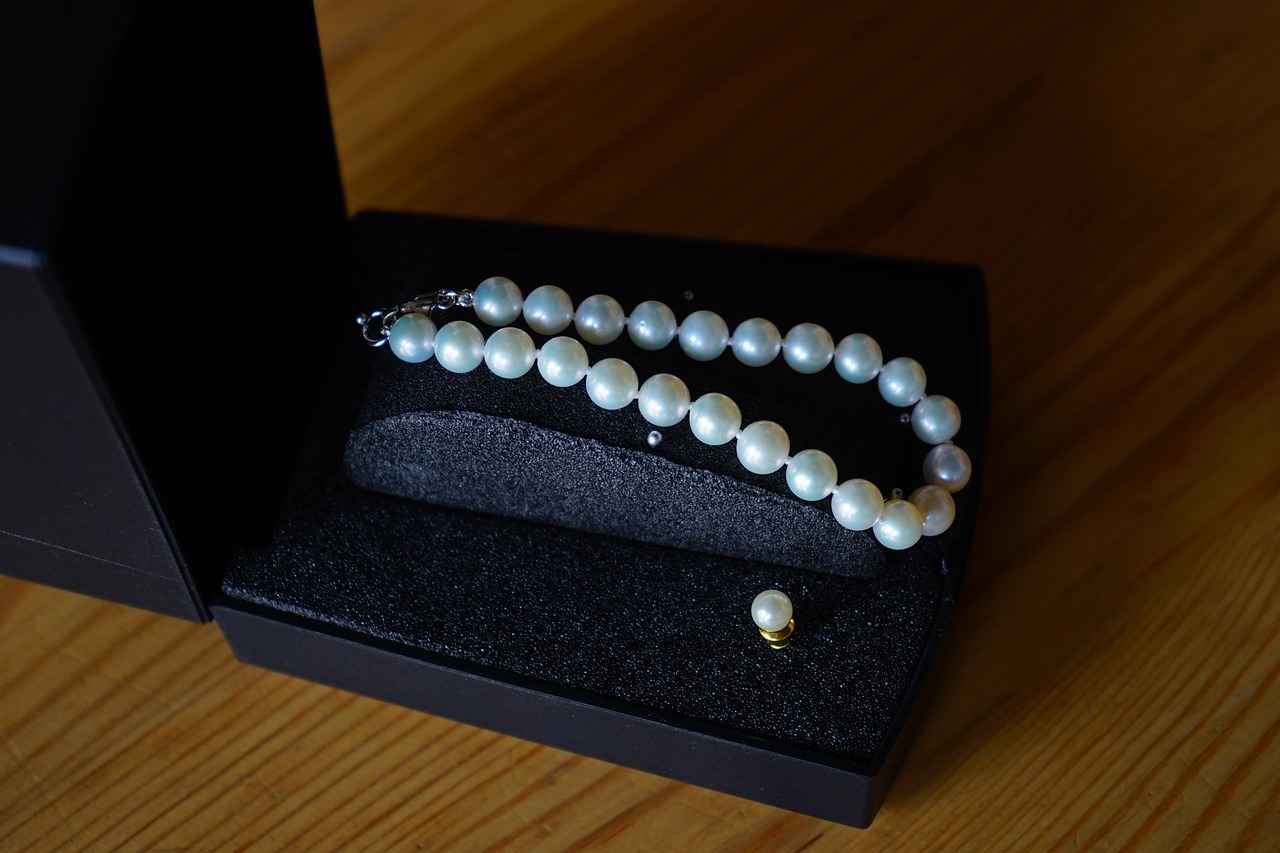
What Are the Cultural Significances of Pearl Earrings?
Pearl earrings are not just beautiful accessories; they carry a wealth of cultural significance across the globe. Their meanings can vary widely, influenced by local customs, traditions, and historical contexts. This article explores the diverse cultural interpretations of pearl earrings, highlighting their roles in various societies.
Pearl earrings hold a special place in many cultures, often symbolizing love, protection, and even wealth. In some regions, they are considered a representation of purity and innocence, while in others, they signify status and sophistication. The following sections delve deeper into these meanings and their implications.
In numerous cultures, pearls are integral to wedding ceremonies. They are often worn by brides as a symbol of purity and new beginnings. For instance, in Western cultures, brides frequently don pearl earrings to enhance their beauty on their special day. In many Asian cultures, pearls are believed to bring good fortune and happiness, making them a favored choice for bridal jewelry.
Pearls have adorned royalty and the elite for centuries. Historically, they were symbols of wealth and status, often showcased in the jewelry of monarchs and aristocrats. For example, Queen Elizabeth I of England famously wore pearls as a display of her power and prestige. Even today, pearls continue to be associated with elegance, making them a timeless choice in the fashion world.
In various cultures, pearls are believed to offer protection against negative energies. For instance, in ancient China, pearls were thought to have mystical properties that could ward off evil spirits. Similarly, in some Native American traditions, pearls are seen as protective talismans, believed to bring peace and harmony to the wearer.
- Asian Cultures: In Japan, pearls are associated with spirituality and are often used in religious ceremonies.
- Middle Eastern Traditions: In many Middle Eastern cultures, pearls symbolize wealth and are frequently gifted on special occasions.
- Western Societies: In Western cultures, pearls represent purity and are commonly worn during significant life events.
Today, pearl earrings continue to play a crucial role in fashion, transcending trends and styles. They are versatile pieces that can be dressed up or down, making them suitable for various occasions. From classic pearl studs to bold statement pieces, these earrings allow individuals to express their unique style while honoring the rich cultural heritage associated with pearls.
Investing in pearl earrings is often regarded as a wise choice due to their enduring appeal and cultural significance. High-quality pearls can appreciate in value, especially those with unique characteristics. Understanding the market trends and the factors that influence pearl value can help buyers make informed decisions, ensuring that their investment not only enhances their jewelry collection but also carries deep cultural meaning.
Pearls in Bridal Traditions
Pearls have long been revered in various cultures, particularly in the context of weddings and bridal traditions. These lustrous gems are often considered a symbol of purity, innocence, and new beginnings, making them a perfect choice for brides on their special day.
In many cultures, pearls are believed to bring good luck and prosperity to the marriage. Wearing pearls on a wedding day is not just a fashion statement; it embodies deep-rooted traditions and beliefs. For instance, in Western cultures, pearls are often associated with the idea of a bride being pure and virtuous, thus enhancing her beauty as she embarks on a new journey with her partner.
Pearls have a rich history that dates back thousands of years. In ancient Rome, pearls were considered the ultimate symbol of wealth and status. Emperors and aristocrats adorned themselves with pearls, believing they possessed magical properties that could bring happiness and protection. This historical significance has translated into modern wedding customs, where pearls are often seen as a traditional choice for bridal jewelry.
- Asian Cultures: In many Asian cultures, pearls are seen as a symbol of wisdom and purity. They are often gifted to brides as part of their dowry, signifying a prosperous future.
- Western Traditions: In Western weddings, brides often wear pearl necklaces or earrings, symbolizing their purity and the new life they are entering.
- Middle Eastern Customs: Pearls are also significant in Middle Eastern cultures, where they are used in bridal adornments to signify wealth and beauty.
Today, pearls continue to hold a special place in bridal fashion. Designers incorporate pearls into various styles, from classic to contemporary. Whether it’s a simple strand of pearls or a statement piece with intricate designs, these gems add an element of sophistication and elegance to any bridal look.
Brides can choose to wear pearls in several ways:
- Pearl Necklaces: A classic pearl necklace can enhance the neckline of any wedding dress.
- Pearl Earrings: Studs or drop earrings can add a touch of elegance without overwhelming the overall look.
- Pearl Hair Accessories: Incorporating pearls into hairpieces, tiaras, or veils can create a stunning and cohesive bridal look.
To ensure that pearls maintain their luster and beauty, brides should take special care of their pearl jewelry. Cleaning with a soft cloth and storing them in a separate pouch can prevent scratches and damage. Avoid exposing pearls to harsh chemicals or extreme temperatures to preserve their natural beauty.
In summary, pearls hold a profound significance in bridal traditions across the globe. Their timeless beauty and rich symbolism make them a cherished choice for brides, reflecting purity, elegance, and the promise of new beginnings.
Historical Context of Pearls in Fashion
Throughout history, pearls have transcended mere adornment, becoming powerful symbols of status and wealth. Their allure has captivated both royalty and the elite, establishing pearls as a hallmark of luxury and elegance in various cultures. This article explores the historical context of pearls in fashion, highlighting their significance and evolution over time.
The journey of pearls as a status symbol can be traced back to ancient civilizations. In ancient Rome, pearls were so highly valued that they were considered the ultimate luxury item. Only the wealthy could afford to wear them, and they were often associated with divinity and power. The famous Roman general Julius Caesar even imposed a tax on pearls to limit their use among the lower classes.
Pearls have adorned the crowns and jewelry of monarchs for centuries. For instance, Queen Elizabeth I of England famously wore a pearl-encrusted gown, which not only showcased her wealth but also her political power. The Habsburgs of Austria also favored pearls, using them in intricate jewelry pieces that signified their noble lineage.
As fashion evolved through the centuries, so did the use of pearls. In the Baroque period, pearls became a staple in extravagant clothing and accessories, often combined with other gemstones to enhance their visual impact. The Rococo era saw an explosion of creativity, with pearls being used in elaborate designs that showcased the skill of artisans.
The 20th century marked a significant turning point for pearl fashion. With the rise of Hollywood, pearls became synonymous with glamour and sophistication. Icons like Audrey Hepburn and Coco Chanel popularized the use of pearls in everyday fashion, making them accessible to the masses. Chanel famously declared that “a woman needs ropes and ropes of pearls,” illustrating their enduring appeal.
Today, pearls continue to hold a prestigious place in the fashion world. They are no longer reserved for the elite but are embraced by individuals seeking to express their unique style. Modern designers experiment with pearls in innovative ways, incorporating them into contemporary jewelry that blends traditional elegance with modern aesthetics.
In contemporary culture, pearls symbolize not just wealth but also individuality and self-expression. They are often associated with femininity and grace, making them a popular choice for various occasions, from casual outings to formal events. The versatility of pearls allows them to be styled in numerous ways, reflecting personal taste and fashion trends.
From ancient royalty to modern fashionistas, pearls have maintained their status as a symbol of elegance and sophistication. Their rich history and evolving significance in fashion reflect not only changing societal norms but also the enduring allure of these exquisite gems. As we continue to embrace pearls in our wardrobes, their legacy as a timeless accessory remains unchallenged.
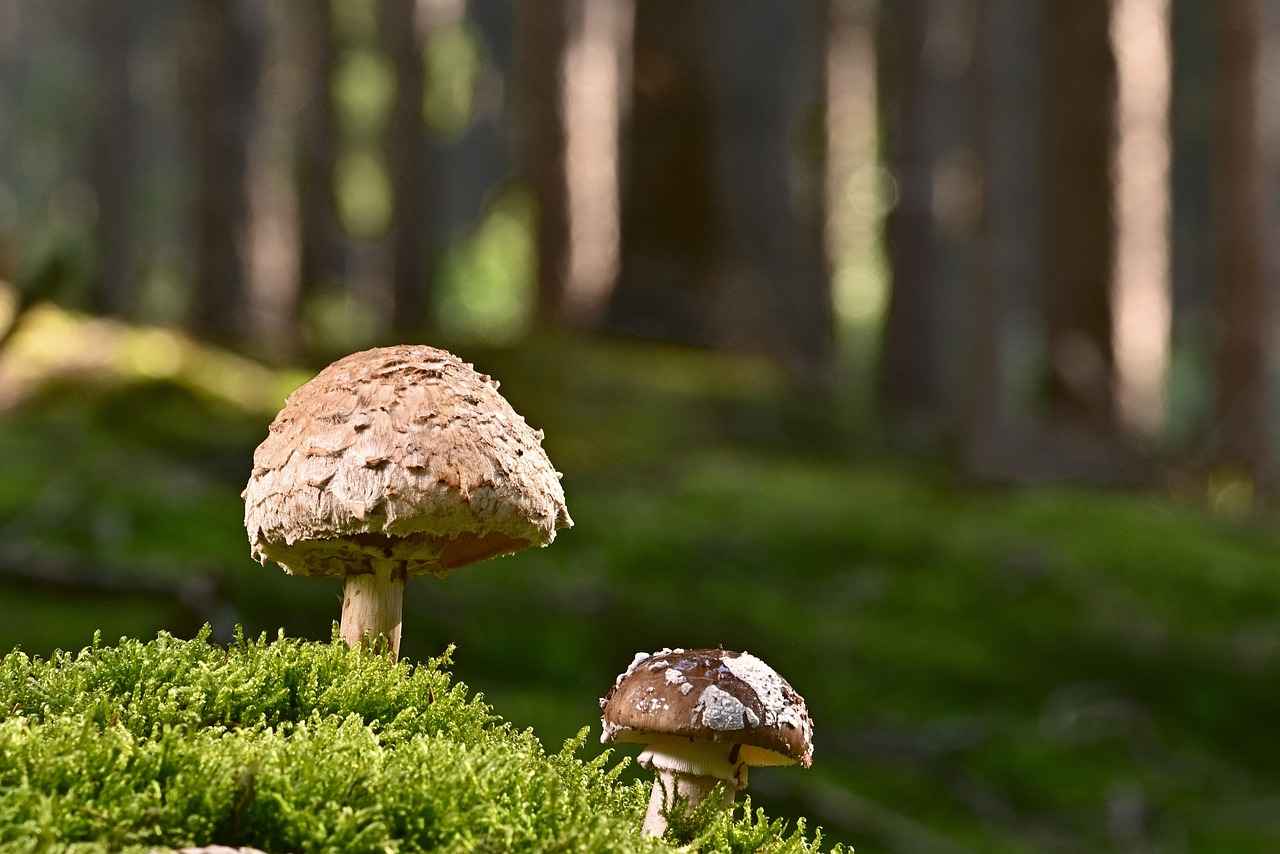
Are Pearl Earrings a Good Investment?
When considering the world of jewelry, pearl earrings stand out not only for their beauty but also for their potential as an investment. With the right knowledge, you can make informed decisions that enhance your jewelry collection while also appreciating in value over time. This article will explore the factors that make pearl earrings a wise investment choice, including market trends, quality indicators, and care tips.
Pearl earrings are more than just accessories; they can be a valuable addition to your investment portfolio. Unlike other gemstones, pearls have a unique charm and history that can significantly influence their market value. Their rarity, especially in high-quality pieces, makes them a sought-after item among collectors and fashion enthusiasts alike.
- Size: Larger pearls are generally more valuable, as they are rarer. The size of the pearl can dramatically impact its price.
- Shape: While round pearls are the most sought after, unique shapes can also command high prices, especially in designer pieces.
- Color: The color of pearls, ranging from classic white to exotic hues, affects their desirability and value. Natural colors tend to be more valuable.
- Luster: The quality of luster, or the shine of the pearl, is a critical factor. Pearls with high luster are typically more prized.
Identifying quality pearls requires some knowledge and an eye for detail. Here are some tips:
- Examine the surface for blemishes; the smoother the surface, the higher the quality.
- Check the nacre thickness; thicker nacre usually indicates a more valuable pearl.
- Consider the brand and origin; reputable brands often guarantee quality.
The pearl jewelry market has seen a resurgence in popularity, particularly with younger consumers. Trends indicate a shift towards modern designs that incorporate pearls into more contemporary styles. This evolution has made pearls more accessible and appealing to a broader audience, thus increasing their market value.
Proper maintenance is crucial to preserving the beauty and value of pearl earrings:
- Clean them gently with a soft cloth after wearing to remove oils and dirt.
- Avoid exposure to harsh chemicals, as they can damage the nacre.
- Store pearls in a soft pouch or lined box to prevent scratches and damage.
Like any investment, there are risks involved. The value of pearl earrings can fluctuate based on fashion trends and market demand. However, understanding the market and focusing on high-quality pieces can mitigate these risks. Investing in pearls should be seen as a long-term commitment, where patience can lead to substantial rewards.
In conclusion, investing in pearl earrings can be a wise decision if approached with the right knowledge and care. By understanding the factors that influence their value and keeping up with market trends, you can make informed choices that enhance both your collection and your financial portfolio.
Factors Affecting the Value of Pearls
When it comes to pearls, their value is determined by a variety of factors that contribute to their overall beauty and desirability. Understanding these elements is essential for anyone looking to purchase or invest in pearl jewelry. Below, we explore the key factors that influence the value of pearls, helping you make informed decisions.
- Size: The size of a pearl is one of the most significant factors in determining its value. Generally, larger pearls are rarer and more valuable. For example, a pearl measuring 9mm is usually worth more than a 6mm pearl of the same type.
- Shape: Pearls come in various shapes, including round, oval, and baroque. Round pearls are typically the most sought after and valued due to their rarity. Irregularly shaped pearls can still be beautiful but may be less valuable.
- Color: The color of a pearl can greatly affect its price. Pearls can be found in a spectrum of colors, including white, black, pink, and gold. Unique colors, such as deep blue or vibrant green, can command higher prices due to their rarity.
- Luster: The luster of a pearl refers to its shine and reflective quality. High-quality pearls exhibit a bright, mirror-like luster, while lower-quality pearls may appear dull. Luster is often a key indicator of a pearl’s overall quality and value.
- Surface Quality: The surface of a pearl should be free from blemishes, spots, or scratches. Pearls with fewer imperfections are typically more valuable. A thorough examination of the pearl’s surface is crucial when assessing its worth.
- Nacre Thickness: The thickness of the nacre, or the layers of material that form the pearl, is another important factor. Pearls with thicker nacre are generally more durable and have a better luster, leading to higher value.
- Type of Pearl: Different types of pearls, such as Akoya, Tahitian, and Freshwater, have varying values based on their unique characteristics and market demand. For instance, Tahitian pearls are often valued higher due to their exotic colors and larger sizes.
To accurately assess the value of pearls, it’s essential to consider all the above factors. When purchasing, always ask for documentation that verifies the pearl’s origin and quality. Reputable jewelers will provide information regarding the pearl’s size, type, and grading, helping you make an informed decision.
Market trends can also play a significant role in the value of pearls. As fashion preferences change, certain types and colors of pearls may become more desirable. Staying informed about current trends can help you identify valuable pieces that may appreciate over time.
Understanding the value of pearls is crucial not only for collectors and investors but also for anyone seeking to purchase pearl jewelry as a gift or personal adornment. Being knowledgeable about these factors can enhance your purchasing experience and ensure you acquire high-quality pieces that truly reflect your style and investment goals.
In summary, the value of pearls is influenced by a combination of size, shape, color, luster, surface quality, nacre thickness, and type. By familiarizing yourself with these factors, you can confidently navigate the world of pearl jewelry, making informed choices that align with your aesthetic preferences and investment aspirations.
Market Trends in Pearl Jewelry
Understanding the dynamics of is essential for anyone looking to invest wisely in this timeless accessory. The pearl jewelry market is influenced by various factors, including fashion trends, cultural shifts, and economic conditions. This article will explore how staying informed about these trends can empower you to make informed investment decisions.
Currently, the pearl jewelry market is experiencing a renaissance, with designers incorporating pearls into contemporary styles. Fashion influencers and celebrities are increasingly showcasing pearls in innovative ways, leading to a surge in popularity. Styles such as chunky pearl necklaces and asymmetrical earrings are becoming mainstream, reflecting a broader shift towards unique and personalized fashion statements.
Fashion movements often dictate the desirability of pearl jewelry. For instance, the rise of sustainable fashion has led to a greater appreciation for natural materials like pearls. As consumers become more environmentally conscious, the demand for ethically sourced pearls has increased. This shift not only enhances the value of pearls but also aligns with a growing trend towards sustainability in fashion.
Investors should pay attention to several key factors when analyzing market trends in pearl jewelry:
- Consumer Preferences: Understanding what styles and types of pearls are in demand can guide investment choices.
- Quality Assessment: High-quality pearls, characterized by their luster and surface quality, tend to hold their value better.
- Brand Reputation: Investing in pearls from reputable brands can enhance resale value and desirability.
- Market Reports: Regularly reviewing market reports and expert analyses can provide insights into future trends.
The value of pearl jewelry can also be affected by economic conditions. During economic downturns, luxury items like pearl jewelry may see a decrease in demand, leading to lower prices. Conversely, in a thriving economy, the demand for high-end jewelry often increases, boosting prices. Investors should remain aware of these economic indicators to make timely investment decisions.
Social media platforms have become powerful tools in shaping trends within the pearl jewelry market. Influencers and brands utilize platforms like Instagram and TikTok to showcase their latest pearl collections, reaching a wider audience. This exposure can significantly impact consumer behavior and purchasing decisions, making it vital for investors to monitor social media trends closely.
Staying informed about market trends in pearl jewelry is crucial for making sound investment decisions. As trends evolve, so do the desirability and value of specific styles and types of pearls. By keeping an eye on fashion movements, consumer preferences, and economic conditions, investors can better position themselves to capitalize on opportunities within the pearl jewelry market.
In summary, the pearl jewelry market is dynamic and influenced by various factors. Understanding these trends can assist investors in making informed decisions, ensuring that their investments align with current market demands. By following the latest styles and consumer preferences, investors can enhance their collections and potentially increase their value over time.
Frequently Asked Questions
- What do pearl earrings symbolize?
Pearl earrings are often seen as symbols of purity, wisdom, and emotional balance. Their unique origins from the ocean add to their allure and cultural significance.
- How are pearls formed?
Pearls form through a fascinating natural process when an irritant enters an oyster, prompting it to secrete layers of nacre. This stunning creation can take years, showcasing nature’s artistry!
- What styles of pearl earrings are popular today?
From classic studs to modern drop earrings, there are various styles to suit every taste. Whether you want timeless elegance or a bold statement piece, there’s a perfect pair for you!
- How should I care for my pearl earrings?
To keep your pearl earrings looking their best, clean them gently with a soft cloth and mild soap. Store them in a soft pouch to prevent scratches and maintain their lovely luster.
- Are pearl earrings a good investment?
Absolutely! Investing in high-quality pearl earrings can be wise. Understanding factors like size, shape, and market trends can help you make informed decisions for your jewelry collection.

